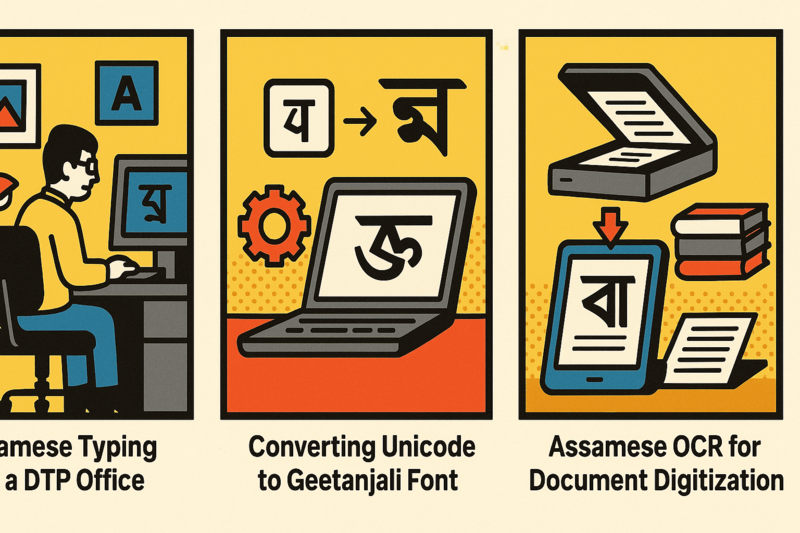Assamese OCR Explained: How DRISTI Helps You Digitize Books and Documents

Assamese OCR Explained: How DRISTI Helps You Digitize Books and Documents
Digitizing Assamese printed material has always been a challenge.
Whether it’s a rare book, an old newspaper, a handwritten journal, or a college assignment — converting printed Assamese text into editable digital form is time-consuming and error-prone.
This is where Assamese OCR becomes an essential tool.
What Is OCR?
OCR (Optical Character Recognition) is technology that converts scanned images or photos of text into editable digital text.
For Assamese, OCR is more challenging because:
- The script has many complex ligatures
- Characters vary widely across print quality
- Many older books are faded or distorted
This is why Assamese OCR requires specialized software.
Why DRISTI Assamese OCR Is a Game-Changer
DRISTI has been used across Assam for:
- Book digitization
- Archives and library projects
- Reprinting old manuscripts
- Academic research
- Converting scanned pages into usable text
It is built specifically for the Assamese script and handles:
- Complex ligatures
- Faded scans
- Older typography styles
- Multi-language pages
Who Can Benefit from Assamese OCR?
1. Publishers
Quickly convert old printed material into digital manuscripts.
2. Students & Researchers
Convert book pages into editable study notes.
3. Printing Houses
Prepare reprints without manual data entry.
4. Libraries & Institutions
Digitize archives for long-term preservation.
Why Manual Typing Is Not Practical
Typing Assamese manually from printed pages leads to:
- Slow workflow
- Human errors
- Incorrect ligatures
- Weeks of extra labor
OCR reduces the time from weeks → hours.
Conclusion
OCR is the fastest and most accurate way to bring printed Assamese text into the digital world.
With DRISTI, students, researchers, publishers, and printing houses can digitize content reliably — preserving Assamese literature and making it accessible for the future.